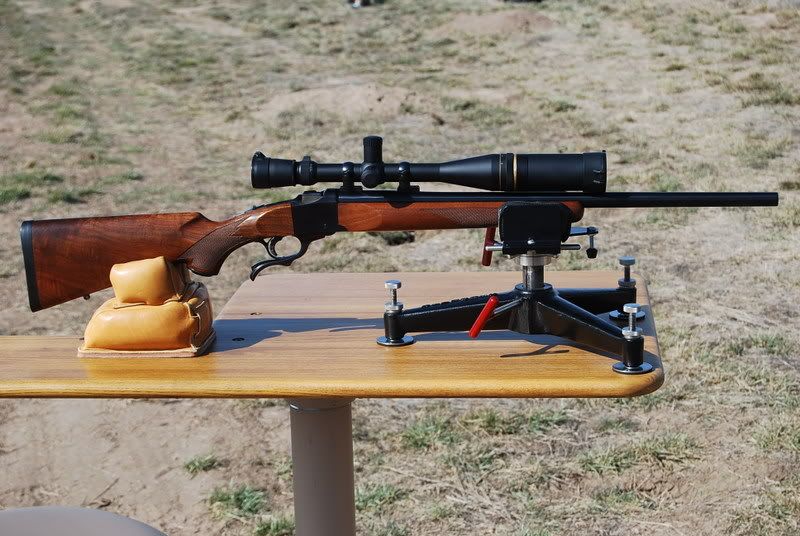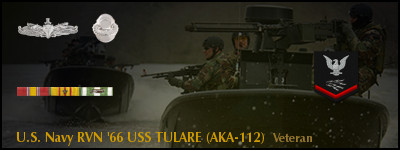I see groups pictured here now and then that point to bedding not being very good. It has been my experience, that a good barrel well bedded, will shoot most any loads reasonably well. The difference between excellent, small groups is sometimes the load. The excellent groups are hard to acheive with bedding that is not quite right.
As an example, some years ago, I purchased a Sako 223 with a Douglas barrel. The gun shot a consistent 5/8" group. One day I took it apart and when the front screw was loosened, the action popped up at least a quarter inch. I recognized the problem and rebedded the action. It settled right into 1/4- 3/8" groups. My contention here is that a good barrel will sometimes shoot tiny groups even if the bedding is not correct. Once the bedding is correct, then the difference in loads really stands out.
I would like to hear your experiences on this.
Lenard
My experience
- Rick in Oregon
- Moderator
- Posts: 4942
- Joined: Thu Dec 01, 2005 4:20 pm
- .204 Ruger Guns: Sako 75V, Cooper MTV, Kimber 84M, Cust M700 11 Twist
- Location: High Desert of Central Oregon
- Contact:
Re: My experience
Lenard: I know well of what you speak. Many times I've brought a nice rifle home, worked up some generic loads for it that have worked in other rifles of the same caliber, gone to the range, shot it, and noted that although not anything to write home about, it showed promise, but not 'worthy' as it was, at least not for what I'd use it for.
Into the shop it goes, adjust the trigger, pull it apart and find the bedding is usually non-existant or poorly done with voids and improper bearing surfaces. Out comes the Dremel, hog it all out, and start from scratch.
Once bedded with a trigger tweak and usualy nothing else, an improvement of about 75% in terms of accuracy is usually the result. The recoil lug area is usually the culprit, and testing for uneven torque as you mentioned from the front guard screw to the tang screw also reveals a bind or torque in the action that must be eliminated if the rifle is ever to shoot properly.
I've purchased "dogs" from guys that were very nice rifles, and after only one day in the shop, have turned into true 'keepers' that really shoot after just a little work done properly. Those rifles always turn out to be treasures, as they "wern't supposed to shoot"... My pet Ruger No.1 Varmint in .223 Rem was one such rifle.

After floating the forearm, glassing the forearm tenon, removing any forearm wood that touched the action, lapped the barrel, installed a Canjar single set trigger, adding a Leupold 6.5-20X (and trashed the Trashco that came with it), and working up a good .223 handload with both the 40 & 50gr Ballistic Tip, paying attention to seating depth, now this little rifle shoots bughole groups of 1/4" to 5/15" from the bench with boring regularity. But bedding was the primary issue as it usually is.
Half the fun of getting a used rifle from a gunshow is taking it home and seeing just how good you can make the old girl shoot after a bit of work. That's a worthwhile hobby in its own right, and quite rewarding to boot.
Into the shop it goes, adjust the trigger, pull it apart and find the bedding is usually non-existant or poorly done with voids and improper bearing surfaces. Out comes the Dremel, hog it all out, and start from scratch.
Once bedded with a trigger tweak and usualy nothing else, an improvement of about 75% in terms of accuracy is usually the result. The recoil lug area is usually the culprit, and testing for uneven torque as you mentioned from the front guard screw to the tang screw also reveals a bind or torque in the action that must be eliminated if the rifle is ever to shoot properly.
I've purchased "dogs" from guys that were very nice rifles, and after only one day in the shop, have turned into true 'keepers' that really shoot after just a little work done properly. Those rifles always turn out to be treasures, as they "wern't supposed to shoot"... My pet Ruger No.1 Varmint in .223 Rem was one such rifle.

After floating the forearm, glassing the forearm tenon, removing any forearm wood that touched the action, lapped the barrel, installed a Canjar single set trigger, adding a Leupold 6.5-20X (and trashed the Trashco that came with it), and working up a good .223 handload with both the 40 & 50gr Ballistic Tip, paying attention to seating depth, now this little rifle shoots bughole groups of 1/4" to 5/15" from the bench with boring regularity. But bedding was the primary issue as it usually is.
Half the fun of getting a used rifle from a gunshow is taking it home and seeing just how good you can make the old girl shoot after a bit of work. That's a worthwhile hobby in its own right, and quite rewarding to boot.
Re: My experience
Rick, you are so right on. In another post I just did, I explained that my 204 Remington is now capable of some real accuracy.
In my opinion, guys need to learn how to bed a stock and do it properly. This project of mine has dragged on, but the one thing it has done, is raised my point of determination. I was going to make this gun shoot, no matter what. Now it is showing good promise and the journey, although conflicted, was well worth it.
Hope you get to go home soon and looking forward to meeting you this spring.
Lenard
In my opinion, guys need to learn how to bed a stock and do it properly. This project of mine has dragged on, but the one thing it has done, is raised my point of determination. I was going to make this gun shoot, no matter what. Now it is showing good promise and the journey, although conflicted, was well worth it.
Hope you get to go home soon and looking forward to meeting you this spring.
Lenard
